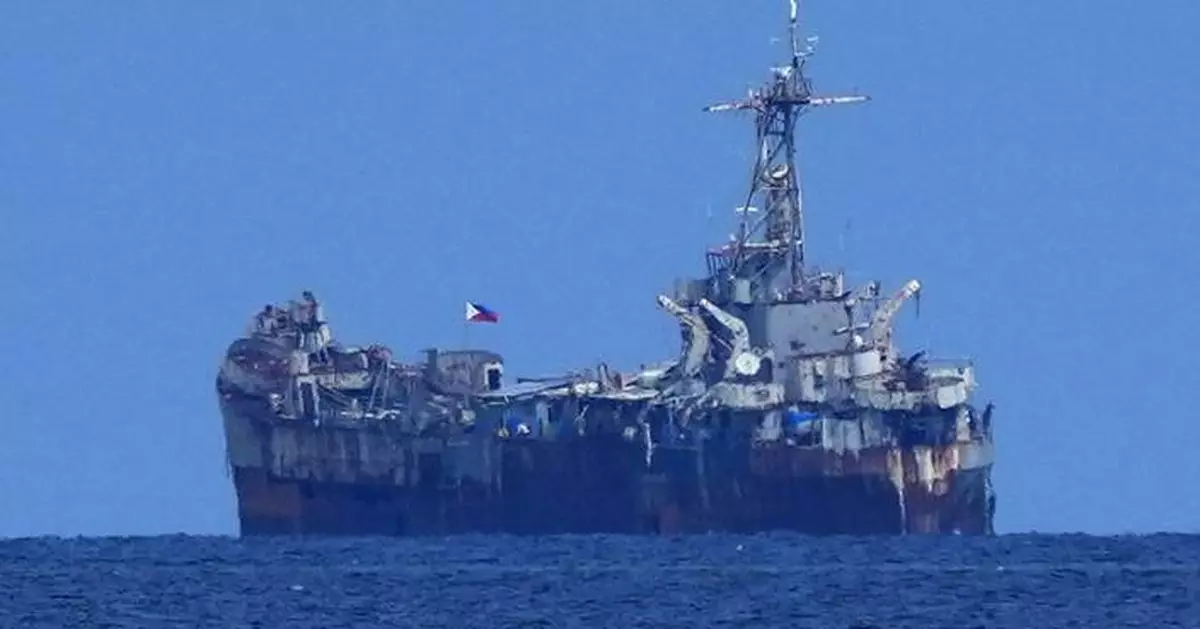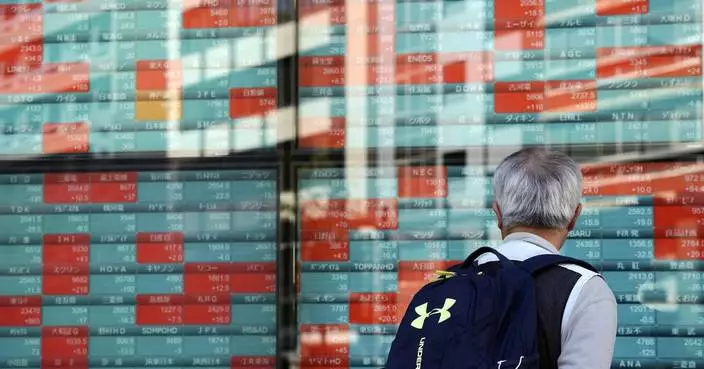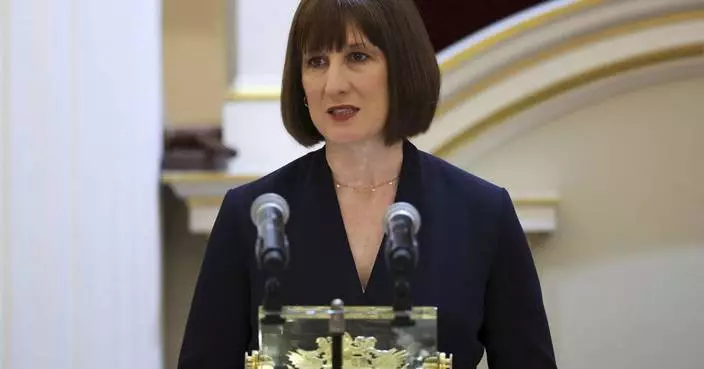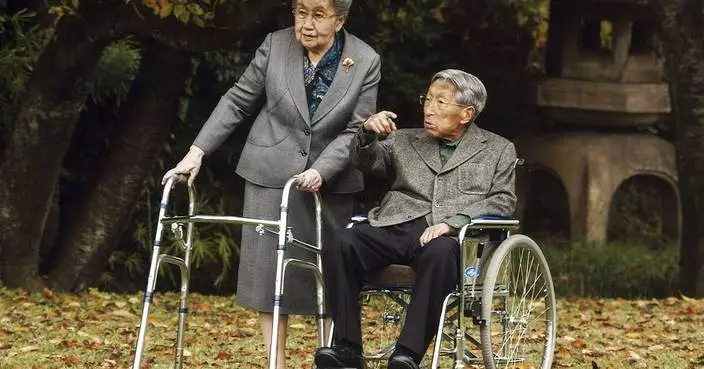MANILA, Philippines (AP) — The Philippine navy transported food and other supplies to a territorial ship outpost in a shoal in the South China Sea without any confrontation with Chinese forces guarding the disputed area, officials said Friday.
The Philippine delivery of supplies and military personnel on Thursday to the Second Thomas Shoal was the third such trip that did not lead to any confrontation since July, when both sides signed a rare deal to stop an alarming spike in violent confrontations.
“The Armed Forces of the Philippines continues to uphold its mandate of safeguarding Philippine sovereignty and ensuring the welfare of its stationed personnel in the West Philippine Sea,” military spokesperson Col. Xerxes Trinidad said, using the Philippine name for the South China Sea.
“There were no untoward incidents during the mission,” Trinidad said.
The Philippines occupied the shoal by permanently beaching a navy ship in its shallows in 1999, prompting China, which also claims it, to surround the atoll with its coast guard and naval forces in what has been a continuing territorial standoff.
Called Ayungin by the Philippines and Ren’ai Jiao by China, the shoal had been the most dangerous flashpoint in the South China Sea and became the scene of increasingly violent confrontations starting last year that alarmed other governments, led by the United States.
The deal, which has not been made public, outlines a temporary arrangement that lets the Philippines transport supplies and fresh batches of Filipino forces to Manila's ship outpost without clashing with China’s coast guard, navy and suspected militia ships guarding the shoal.
Neither side conceded its territorial claims under the deal, which only applies to the Second Thomas Shoal, according to Philippine officials.
The agreement was reached after China agreed to drop a demand for the Philippines to notify China in advance of any trip to the shoal and for Chinese forces to board Philippine supply vessels for inspection, two Philippine officials told The Associated Press in July. They spoke on condition of anonymity for lack of authority to discuss the negotiations publicly.
It’s the first known agreement by China with any one rival claimant country over a specific shoal in the South China Sea, which Beijing claims almost in its entirety.
Before the deal was reached, Chinese coast guard and navy forces had used powerful water cannons and dangerous blocking maneuvers to prevent Philippine supply vessels from reaching Manila’s fragile outpost at the shoal — the long-grounded and rusting warship, the BRP Sierra Madre.
In the worst confrontation, Chinese forces on speedboats repeatedly rammed and then boarded two Philippine navy boats on June 17 to prevent Filipino personnel from transferring food and other supplies including firearms to the BRP Sierra Madre, the Philippine military said.
The Chinese forces seized the Philippine navy boats and damaged them with machetes and improvised spears. They also seized seven M4 rifles, which were packed in cases, and other supplies in a chaotic faceoff that wounded several Filipino navy personnel. The assault was captured in video and photos that were later made public by Philippine officials.
China and the Philippines blamed each other for the confrontation. The United States, Japan and Australia were among those who condemned the Chinese actions at the shoal.
While clashes have stopped at the Second Thomas Shoal, sporadic confrontations have continued elsewhere in the South China Sea. Vietnam, Malaysia, Brunei, Taiwan and, at times, Indonesia, have also been involved in the long-seething territorial disputes in the busy waterway.
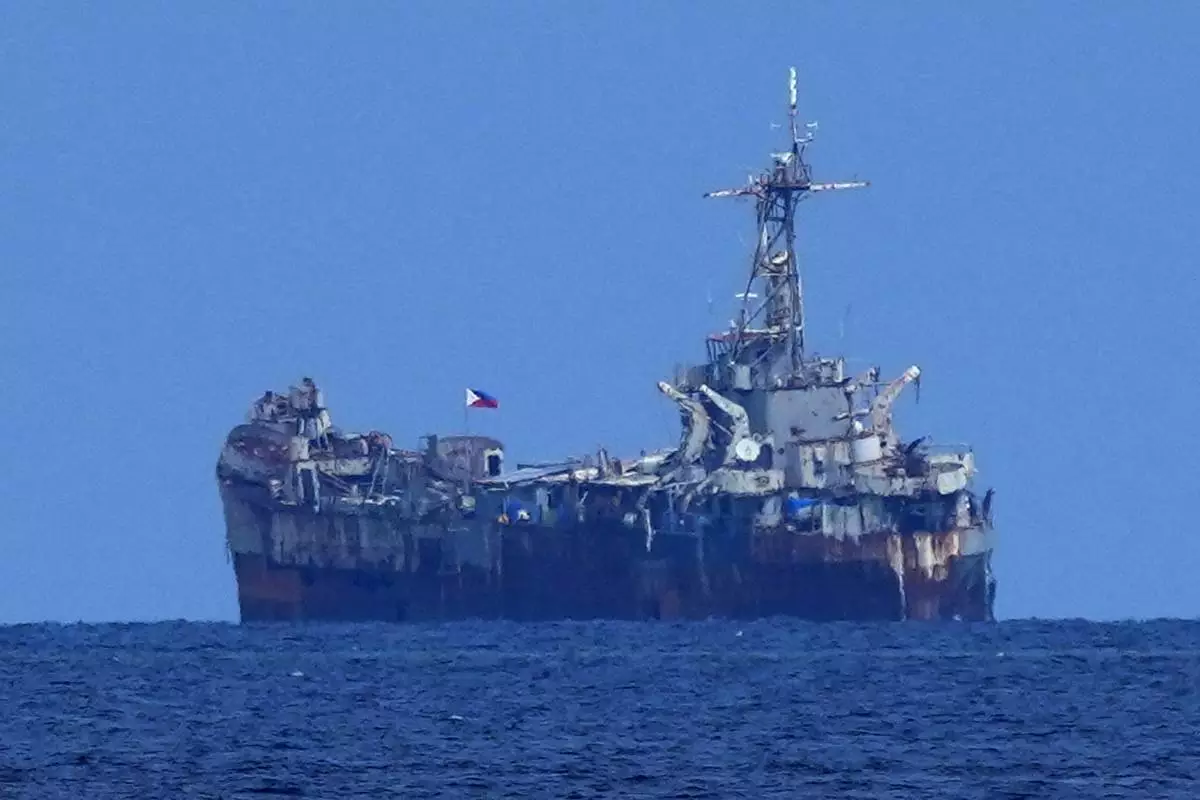
FILE - A dilapidated but still active Philippine Navy ship BRP Sierra Madre sits at the Second Thomas Shoal, locally known as Ayungin Shoal, at the disputed South China Sea on Aug. 22, 2023. (AP Photo/Aaron Favila, File)
COLOMBO, Sri Lanka (AP) — The party of Sri Lanka’s new Marxist-leaning President Anura Kumara Dissanayake has won a two-thirds majority in parliament, according to official election results Friday, providing a strong mandate for his program for economic revival.
Dissanayake’s National People’s Power Party won 159 of the 225 seats, according to the Elections Commission.
The Samagi Jana Balawegaya, or United People's Power Party, led by opposition leader Sajith Premedasa had 40 seats.
Dissanayake was elected president on Sept. 21 in a rejection of traditional political parties that have governed the island nation since its independence from British rule in 1948. But he received just 42% of the votes, fueling questions over his party’s outlook in Thursday’s parliamentary elections. But the party received a large increase in support less than two months into his presidency.
In a major surprise and a big shift in the country's electoral landscape, his party won the Jaffna district, the heartland of ethnic Tamils in the north, and many other minority strongholds.
The victory in Jaffna marks a great dent for traditional ethnic Tamil parties that have dominated the politics of the north since independence.
It is also a major shift in the attitude of Tamils, who have long been suspicious of majority ethnic Sinhalese leaders. Ethnic Tamil rebels fought an unsuccessful civil war in 1983-2009 to create a separate homeland, saying they were being marginalized by governments controlled by Sinhalese.
According to conservative U.N. estimates, more than 100,000 people were killed in the conflict.
Veeragathy Thanabalasingham, a Colombo-based political analyst, said northern voters chose the NPP because they could not find a local alternative to traditional Tamil political parties, with which they were disillusioned.
“The Tamil parties were divided and contested separately, and as a result the Tamil people's representation is scattered,” he said.
Of the 225 seats in parliament, 196 were up for grabs under Sri Lanka’s proportional representative electoral system, which allocates seats in each district among the parties according to the proportion of the votes they get.
The remaining 29 seats — called the national list seats — are allocated to parties and independent groups according to the proportion of the total votes they receive countrywide.
The election comes at a decisive time for Sri Lankans, as the island nation is struggling to emerge from its worst economic crisis, having declared bankruptcy after defaulting on its external debt in 2022.
The country is now in the middle of a bailout program with the International Monetary Fund, with debt restructuring with international creditors nearly complete.
Dissanayake said during the presidential campaign that he planned to propose significant changes to the targets set in the IMF deal, which his predecessor, Ranil Wickremesinghe, signed, saying it placed too much burden on the people. However, he has since changed his stance and says Sri Lanka will go along with the agreement.
Sri Lanka’s crisis was largely the result of economic mismanagement combined with fallout from the COVID-19 pandemic, which along with 2019 militant attacks devastated its important tourism industry. The pandemic also disrupted the flow of remittances from Sri Lankans working abroad.
The government also slashed taxes in 2019, depleting the treasury just as the virus hit. Foreign exchange reserves plummeted, leaving Sri Lanka unable to pay for imports or defend its currency, the rupee.
Sri Lanka’s economic upheaval led to a political crisis that forced then-President Gotabaya Rajapaksa to resign in 2022. Parliament then elected Wickremesinghe to replace him.,
The economy was stabilized, inflation dropped, the rupee strengthened and foreign reserves increased under Wickremesinghe. Nonetheless, he lost the election as public dissatisfaction grew over the government’s effort to increase revenue by raising electricity bills and imposing heavy new income taxes on professionals and businesses as part of the government’s efforts to meet the IMF conditions.
Voters were also drawn by the NPP’s cry for change in the political culture and an end to corruption, because they perceived the parties that ruled Sri Lanka so far caused the economic collapse.
Dissanayake’s promise to punish members of previous governments accused of corruption and to recover allegedly stolen assets also raised much hope among the people.
Jeewantha Balasuriya, 42, a businessman from the town of Gampaha, said he hopes Dissanayake and his party will use their resounding victory to rebuild the country.
“People have given them a strong mandate. I am hopeful that the NPP will use this mandate to uplift the country from the present pathetic situation,” he said.
He expressed confidence that Dissanayake and his party would curb corruption and mismanagement and establish law and order, which he said were vital for resuscitating the economy.

Workers leave a poll counting center following the parliamentary election in Colombo, Sri Lanka, Friday, Nov. 15, 2024. (AP Photo/Eranga Jayawardena)

People walk past polling results displayed on a giant screen outside a vote counting center following the parliamentary election in Colombo, Sri Lanka, Friday, Nov. 15, 2024. (AP Photo/Eranga Jayawardena)

People watch polling results displayed on a giant screen outside a vote counting center following the parliamentary election in Colombo, Sri Lanka, Friday, Nov. 15, 2024. (AP Photo/Eranga Jayawardena)

People queue up to cast their votes at a polling station during the parliamentary election in Colombo, Sri Lanka, Thursday, Nov. 14, 2024.(AP Photo/Eranga Jayawardena)
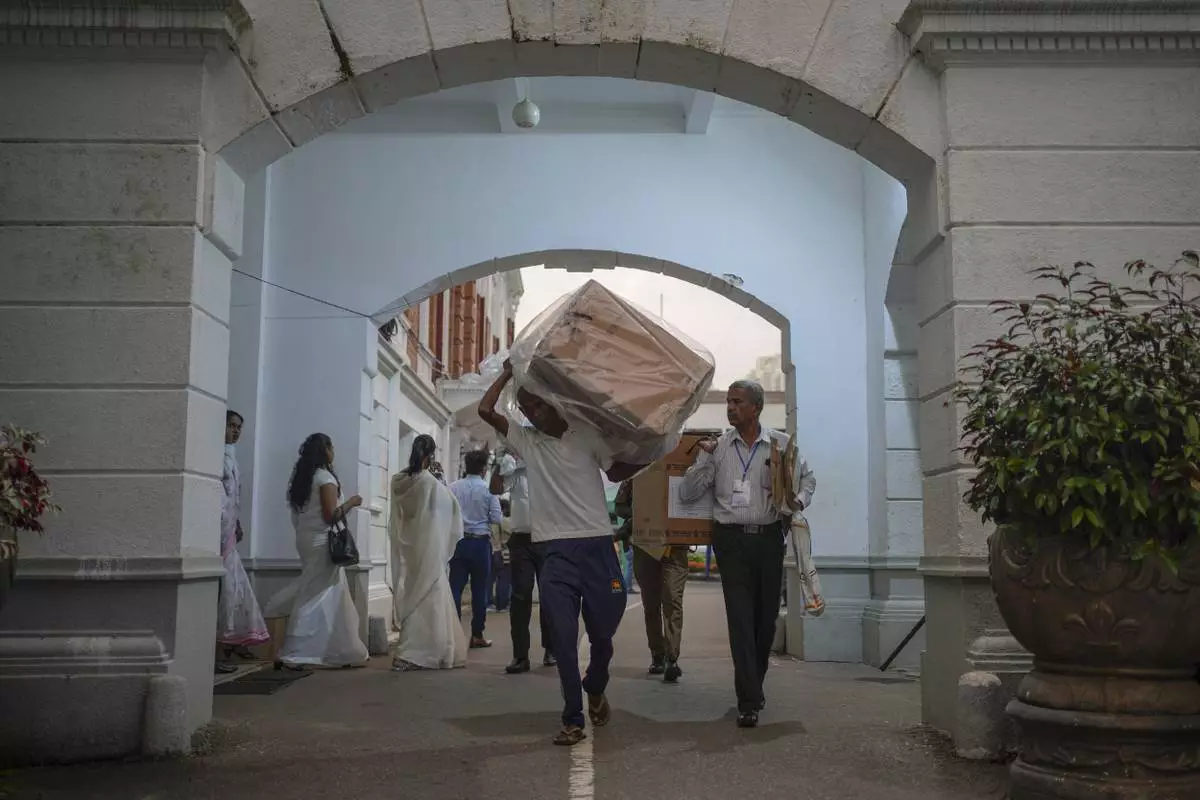
Polling workers return to a counting center with a ballot box at the end of the polling in the parliamentary election in Colombo, Sri Lanka, Thursday, Nov. 14, 2024. (AP Photo/Eranga Jayawardena)
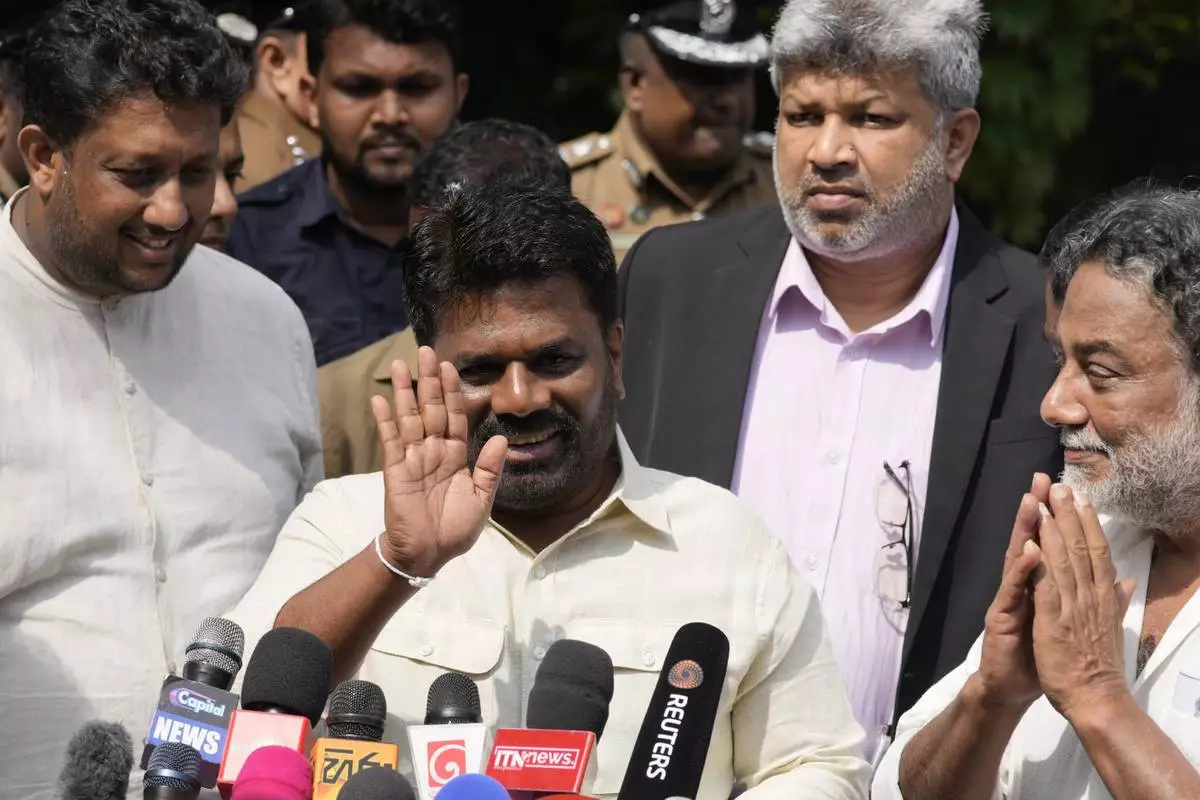
Sri Lankan President Anura Kumara Dissanayake leaves after casting his vote during the parliamentary election in Colombo, Sri Lanka, Thursday, Nov. 14, 2024.(AP Photo/Eranga Jayawardena)



